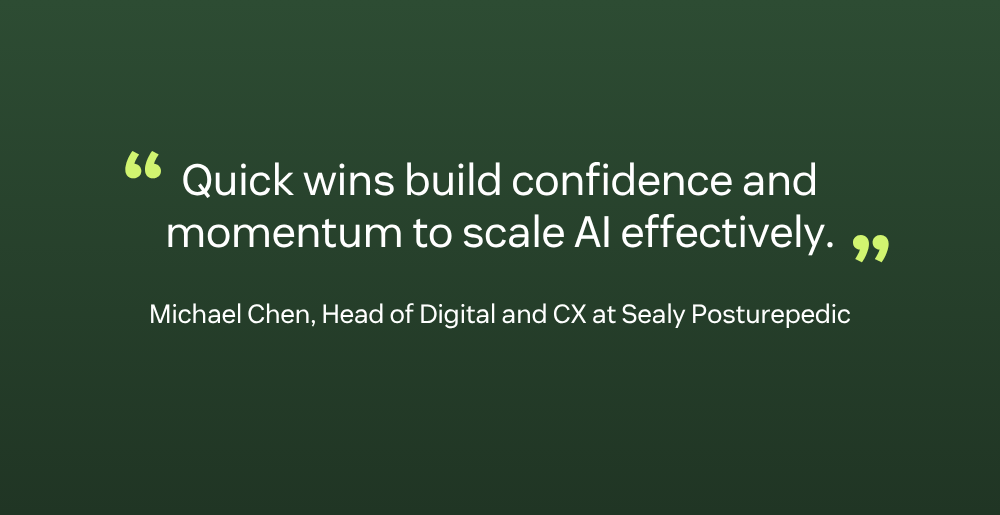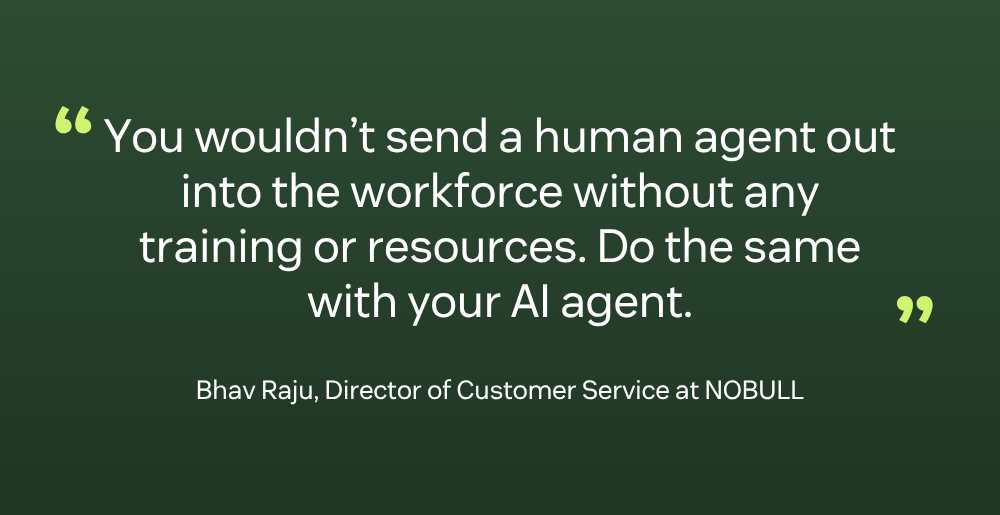Article • 3 min read
Lessons from AI Summit: How to build the right foundation for your AI strategy
What Sealy Posturepedic and NOBULL's success reveals about getting your AI plans right from the start.
Candace Marshall
Vice President of Product, AI and Automation at Zendesk
Última atualização em October 22, 2025
Today’s leading CX organizations are gaining a competitive edge with AI.
At this year’s Zendesk AI Summit, global CX leaders shared their brands’ journeys: going from AI theory to practice—and achieving incredible results in the process.
Two leaders, in particular, stood out to me: Bhav Raju, Director of Customer Service at NOBULL, and Michael Chen, Head of Digital and CX for Sealy Posturepedic. They shared the lessons they’ve learned as early adopters of AI and both agreed that laying a solid foundation is a non-negotiable for achieving success.
Here are some of the top takeaways from their sessions on how to bring an AI strategy to life—whether your brand is just starting on its AI journey or realigning its strategy for 2026.
1. Establish a solid and structured knowledge base
A structured knowledge base is the bedrock of your AI strategy and brands must prioritize their efforts accordingly.
If you’re just getting started, focus on creating quality content (think: articles and FAQs) to populate your knowledge base. In addition to creating new content, you also have to dedicate time to revising and updating the information in your knowledge base. That way, you have a solid foundation to serve as a resource for your human agents, as well as your AI agents.
2. Start small, then iterate
Once you have a strong knowledge base in place, you can introduce AI to your team. But even then, start small. Introduce one practical tool at a time and measure its impact.

Sealy Posturepedic focused on taking an iterative approach. They started by making the generative AI function available only to human agents, so those folks could see firsthand how the function could help them. Once agents reached a base-level understanding of how technology could help, they slowly introduced other functions.
3. Train your AI like your people
AI agents can’t operate on information dumps. Instead, they need strong foundations (as I mentioned above) and structured training to be as effective as your human agents and deliver great customer experiences.
During her session, Raju encouraged her peers to treat AI like part of the team by giving it resources, monitoring performance, and deploying it where it can have the biggest impact.
4. Empower and upskill your human agents to become product experts
With AI trained on established knowledge bases, both NOBULL and Sealy are now focused on elevating the roles of their human agents, freeing up their time to focus on complex customer interactions.
By leaning on AI to handle routine, low-touch inquiries, NOBULL’s human agents can shift their focus toward becoming true product experts. This shift not only improves customer support for more complex questions, but also elevates the overall service experience.

Streamlined processes powered by AI improve the human agent experience, too.
At NOBULL, this evolved service model is also making an impact on their bottom line. With their agents less focused on the single-touch tickets that consumed most of their day to day, they’re able to spend quality time with their customers and guide their purchase decisions. And it’s working—revenue has increased as a result.
For me, these lessons show that a solid AI strategy isn’t just about moving quickly, but building well. And the strongest foundations—knowledge, training, and empowerment—are what make success possible.
